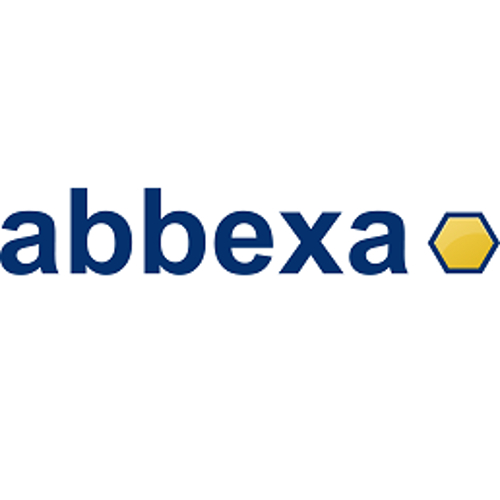IFNL4 / FITC /
Product Details
| Description | IFNL4 Antibody (FITC) is a Rabbit Polyclonal against IFNL4 conjugated to FITC. | |
|---|---|---|
| Conjugate | FITC | |
| Clone | ||
| Target Species | Human | |
| Applications | ELISA | |
| Supplier | Abbexa | |
| Catalog # | Sign in to view product details, citations, and spectra | |
| Size | ||
| Price | ||
| Antigen | ||
| Host | ||
| Isotype |
About IFNL4
This gene is a polymorphic pseudogene which, in some humans, encodes the interferon (IFN) lambda 4 protein. Humans are polymorphic for the dinucleotide TT/deltaG allele. Compared to the ancestral state in non-human primates, the TT allele produces a frameshift in the coding region of this gene which is predicted to induce nonsense-mediated mRNA decay. This allele, and an allele in the first intron of this gene, have experienced a rapid increase in frequency and show indications of positive selection. The ancestral states of these alleles are associated with an impaired ability to clear hepatitis C virus. This gene, like other type III interferons (IFNs), interacts with the IFN lambda receptor complex (IFNLR) whose signaling is generally restricted to epithelial cells. This gene resides in a cluster of four type III IFN genes and at least two pseudogenes on chromosome 19q13.2. In general, interferons are produced in response to viral infection and block viral replication and propagation to uninfected cells by activating the JAK-STAT pathway and up-regulating antiviral genes. Multiple alternatively spliced transcripts have been described for this gene but their biological validity and protein coding status is still being ascertained. [provided by RefSeq, May 2017]
This gene is a polymorphic pseudogene which, in some humans, encodes the interferon (IFN) lambda 4 protein. Humans are polymorphic for the dinucleotide TT/deltaG allele. Compared to the ancestral state in non-human primates, the TT allele produces a frameshift in the coding region of this gene which is predicted to induce nonsense-mediated mRNA decay. This allele, and an allele in the first intron of this gene, have experienced a rapid increase in frequency and show indications of positive selection. The ancestral states of these alleles are associated with an impaired ability to clear hepatitis C virus. This gene, like other type III interferons (IFNs), interacts with the IFN lambda receptor complex (IFNLR) whose signaling is generally restricted to epithelial cells. This gene resides in a cluster of four type III IFN genes and at least two pseudogenes on chromosome 19q13.2. In general, interferons are produced in response to viral infection and block viral replication and propagation to uninfected cells by activating the JAK-STAT pathway and up-regulating antiviral genes. Multiple alternatively spliced transcripts have been described for this gene but their biological validity and protein coding status is still being ascertained. [provided by RefSeq, May 2017]
About FITC
Fluorescein isothiocyanate (FITC) has an excitation peak at 495 nm and an emission peak at 519 nm. The name FITC is a misnomer in that the isothiocyanate is a reactive form of this dye. Once FITC is conjugated to an antibody, it is simply Fluorescein conjugated. FITC is one of the most widely used dyes for fluorescent applications, therefore most instruments come standard with a 488 nm laser and FITC filter set up. FITC is commonly conjugated to secondary antibodies and used in applications such as flow cytometry, immunocytochemistry, and immunohistochemistry. FITC is relatively dim, sensitive to photobleaching and it is susceptible to changes is pH. There are better performing alternatives to FITC, like Vio®Bright 515, Alexa Fluor™ 488, iFluor® 488, CF®488A and DY-488. FITC is a long-time generic dye with no sole manufacturer or trademark.
Fluorescein isothiocyanate (FITC) has an excitation peak at 495 nm and an emission peak at 519 nm. The name FITC is a misnomer in that the isothiocyanate is a reactive form of this dye. Once FITC is conjugated to an antibody, it is simply Fluorescein conjugated. FITC is one of the most widely used dyes for fluorescent applications, therefore most instruments come standard with a 488 nm laser and FITC filter set up. FITC is commonly conjugated to secondary antibodies and used in applications such as flow cytometry, immunocytochemistry, and immunohistochemistry. FITC is relatively dim, sensitive to photobleaching and it is susceptible to changes is pH. There are better performing alternatives to FITC, like Vio®Bright 515, Alexa Fluor™ 488, iFluor® 488, CF®488A and DY-488. FITC is a long-time generic dye with no sole manufacturer or trademark.
Experiment Design Tools
Panel Builders
Looking to design a Microscopy or Flow Cytometry experiment?
Validation References
Reviews & Ratings
| Reviews |
|---|
Looking for more options?
18 IFNL4 antibodies from over 3 suppliers available with over 8 conjugates.





